There is a well known Japanese proverb that goes like this: "dress (in kimonos) till you drop in Kyoto, eat till you drop in Osaka."
It pretty much sums up the way people think of Osaka, a gastronomic destination for both Japanese and foreign tourists alike. The word kuidaore (食い倒れ) is often used to describe the city, which literally means "to eat oneself bankrupt."
Clearly Osaka is all about food.
We traveled to Osaka for dinner two out of the three nights we were staying in the neighboring city, Kyoto. After all, Osaka is only a 14 minute ride on the Shinkansen (bullet train), or a 30 minute local train ride away.
One of those nights, we went to the most popular street food destination in Osaka: Dotonbori.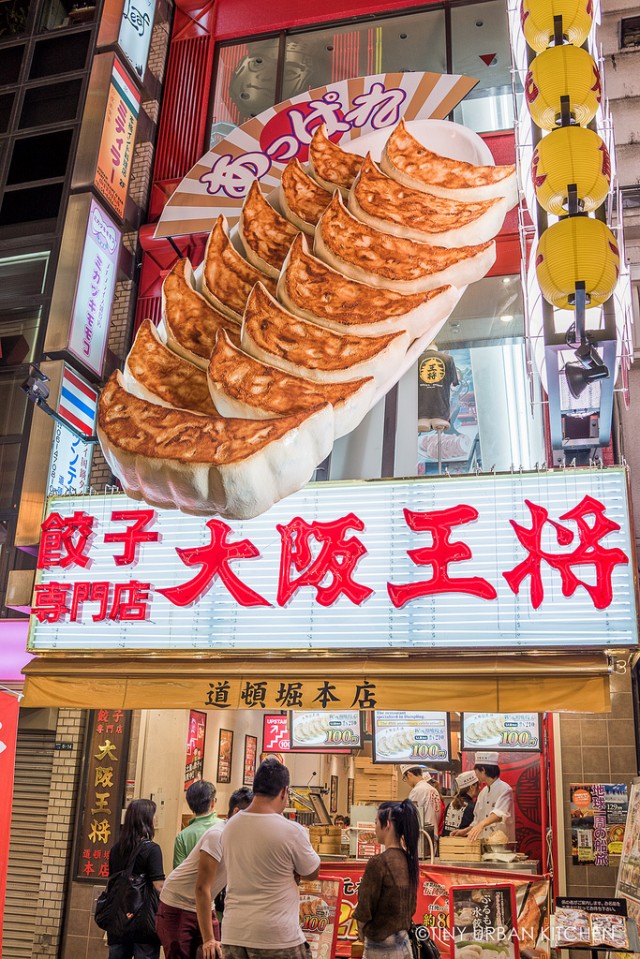
Dotonbori is a bustling area along the Dotonbori-canal in Osaka. It's a well known food destination, and both sides of the canal are filled with all sorts of tasty options. The neighborhood is also a sight to behold.
"I've never seen anything like this" remarked Bryan as we meandered around the crowded streets. 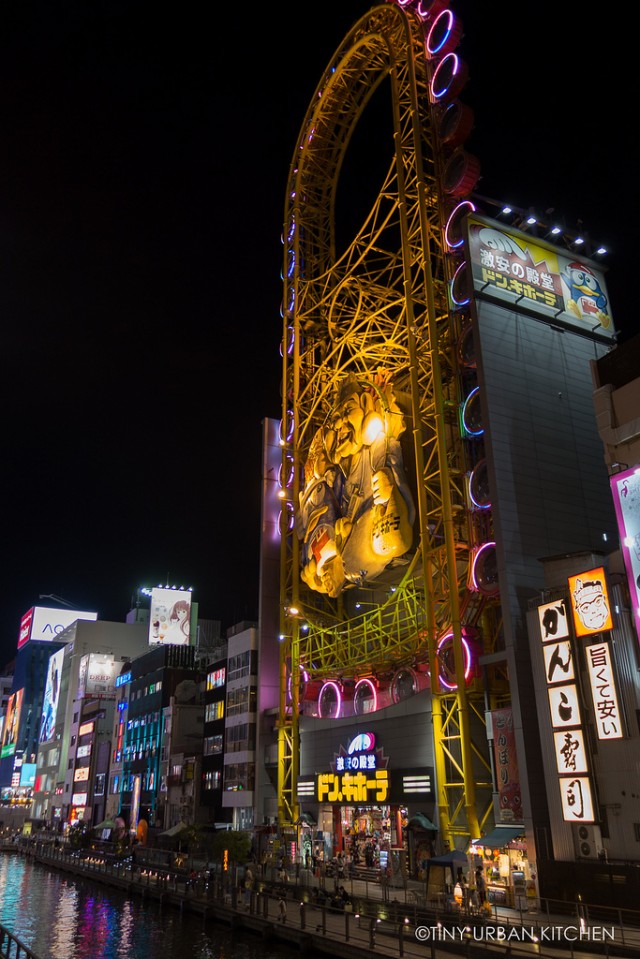
Well-known colorful, almost gaudy, icons line the streets, such as a huge 6-meter wide crab whose claws actually move (see photo at the top of the post), larger-than-life gyoza, and huge, eccentric statues of clowns, a running man from Glico, and much, much more. There are neon lights, music, friendly vendors, and jam-packed crowds.
Dotonbori is also one of the best places to enjoy Osaka street food, especially two of the city's most famous dishes: okonomiyaki and takoyaki.
1. Okonomiyaki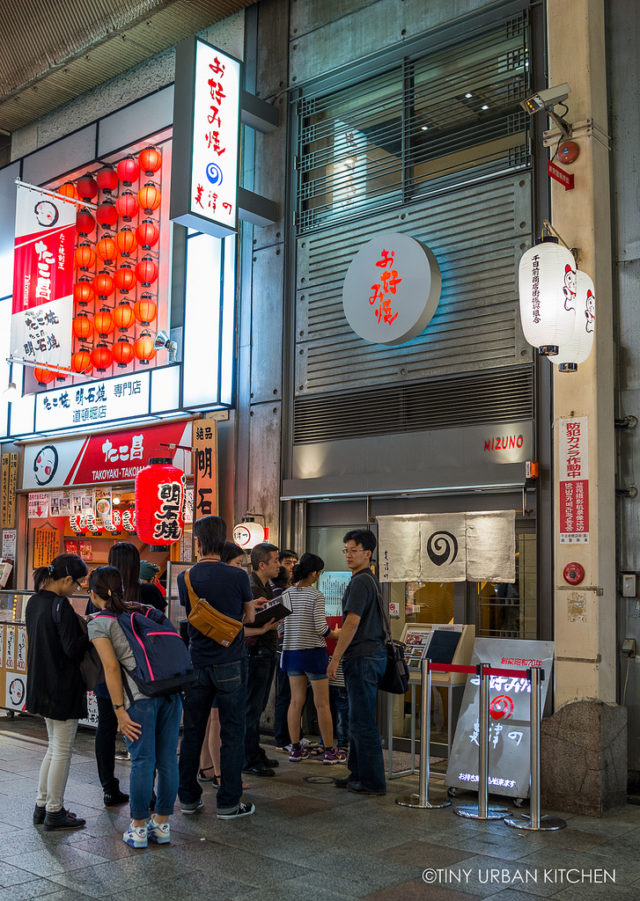
Our first stop was the famous family-owned okonomiyaki place called Mizuno. The lines out the door attest to the popularity of the place. Okonomiyaki is a Japanese pancake made from a batter of flour, shredded nagaimo (a Japanese yam), egg, and dashi broth. You can fill it with all sorts of meat, vegetables, or seafood according to your preference. In fact, "okonomi" means "as you like it".
The traditional Osaka-style okonomiyaki includes shredded cabbage, pork belly, and seafood. The pancake is then topped with bonito flakes, okonomiyaki sauce (a brown, tangy sauce), mayonnaise, and scallions.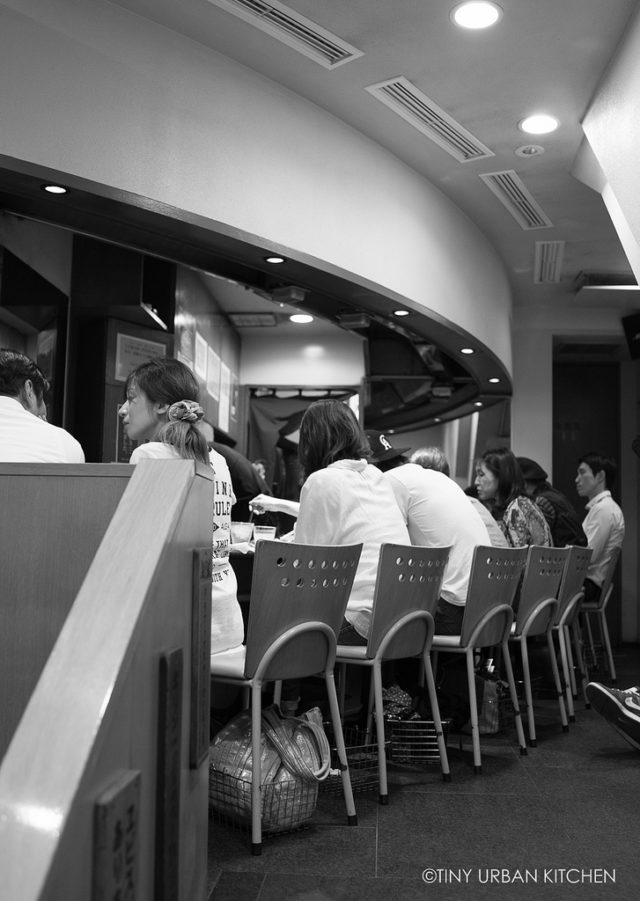
Mizuno is not a big restaurant, and thus it can't seat many at once. Thankfully, the lines moves pretty quickly. People don't loiter or hang around. They come in, eat their okonomiyaki, and then head on their way. We initially thought the restaurant only had 8 bar seats. In fact, there is a second floor which has tables for larger parties like ours.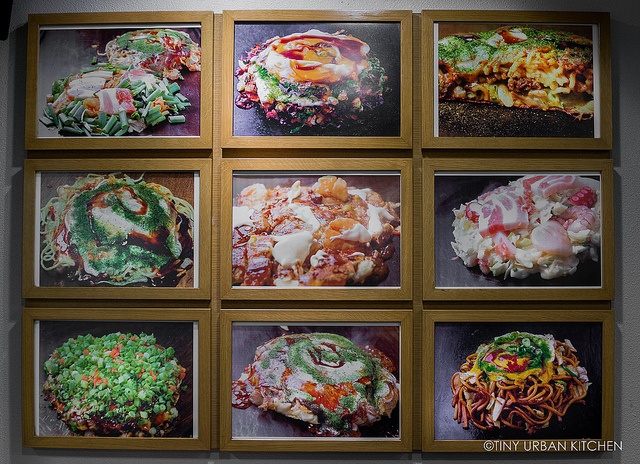
If you've never had okonomiyaki before, the menu can be a bit overwhelming. There are all these different options for toppings, sauces, fillings, and even whether to add noodles or not. I can tell you I definitely felt overwhelmed.
Thankfully, the menu does point to some suggested "most popular" items. Furthermore, the wall right at the entrance has a nice collection of photographs showing the most popular ones.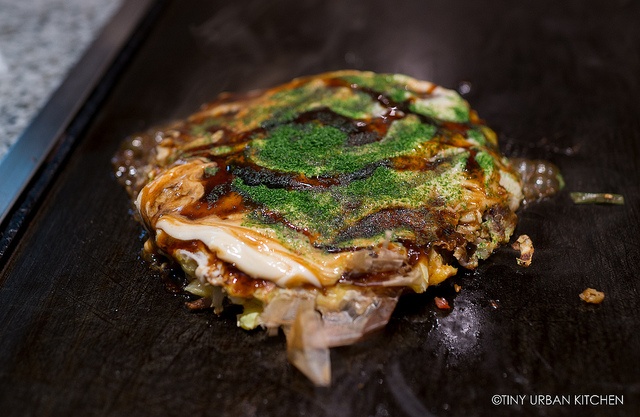
We ordered the classic "mazeyaki", which translates to "mixed grill" and includes shredded cabbage along with squid, pork belly, octopus, and shrimp. Once it's cooked tableside, the chef tops the okonomiyaki with Mizuno's signature seaweed powder, brown sauce, and mayonnaise. This one was listed as the second most popular dish on the menu.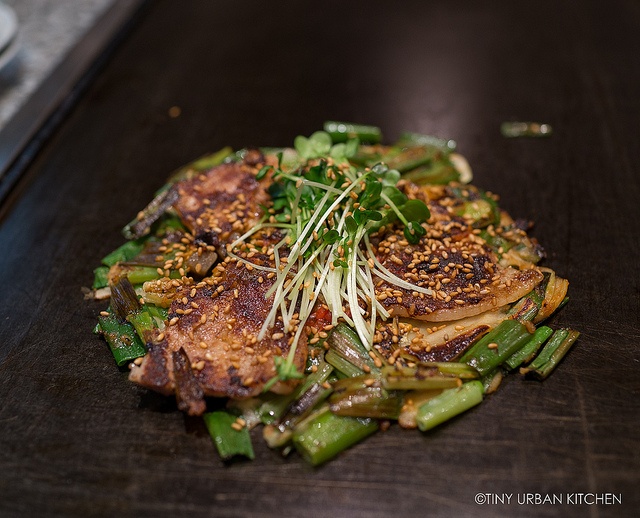
The pork belly and leek okonomiyaki is third most popular on the menu and is much simpler, less gooey, and less rich than the mazeyaki. There's hardly any sauce on top. Instead, the drier pancake is topped with a simple sprinkling of baby sprouts.
Finally we got the number one most popular one, a version made with mountain yam flour as well as a mixed variety of seafood which included shrimp, scallops, and pork.
All three were pretty tasty and most certainly satisfying as the utmost comfort food. A part of me wished I could read the menu better so I could create okonomiyakis more suited to my personal preference, which is less meat and more vegetables. Of course, most people aren't like me and probably think the ratio of meat/seafood to vegetable is just perfect. That would explain the crazy lines at this 65 year old family owned establishment.
Service is pretty fast. They take your order before you even sit down (while you're waiting in line), so soon after you sit down, they come to your table and begin cooking the okonomiyaki table-side. All the tables have a flat griddle down the middle, so everything is made to order right in front of your eyes.
2. Takoyaki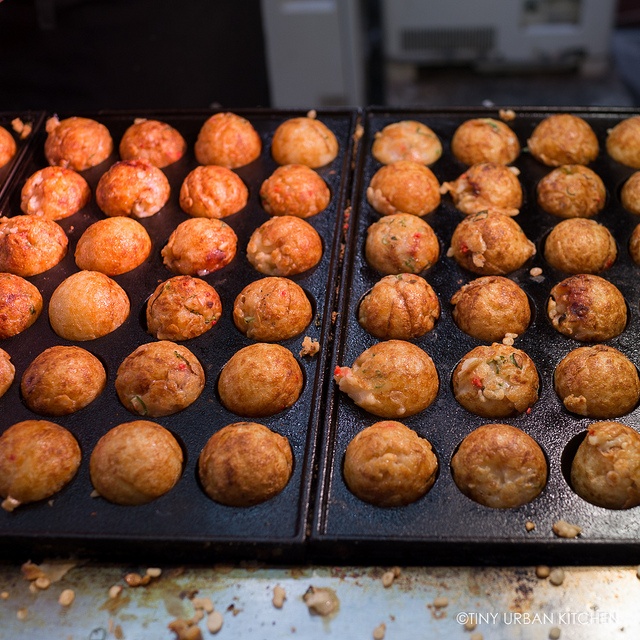
Takoyaki is another well known Osaka street treat. "Tako" means octopus and "yaki" means fried or grilled.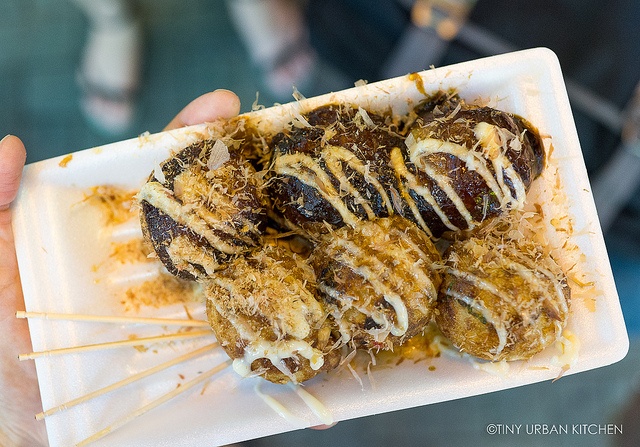
Takoyaki are bite-sized balls made from a flour and egg based batter (sort of like a pancake) filled with pieces of octopus, ginger, and scallions. They are frequently topped with mayonnaise, bonito flakes, and takoyaki sauce. They were invented in Osaka around 1935 and have since spread to the rest of Japan.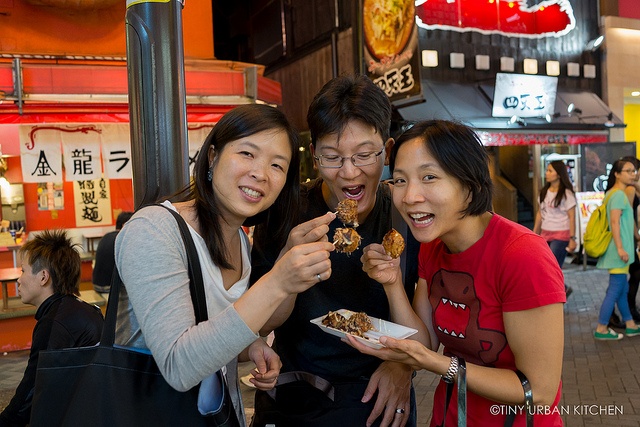
Four of us hit a takoyaki stand after polishing off three okonomiyakis from Mizuno. It was a little past 9PM at that point, and we were surprised to see that some of the takoyaki stands had closed. It's so weird that a place with so much "nightlife"-like activity has food stalls that close early.
Nevertheless, we did find one stand that was open and the four of us got a small order of six to try.
Topped with bonito, takoyaki sauce (a brown, tangy sauce) and mayonnaise, these sort of remind me of okonomiyaki but with a fluffier batter and with a different filling. They are soft and gooey inside, best enjoyed hot.
3. Fugu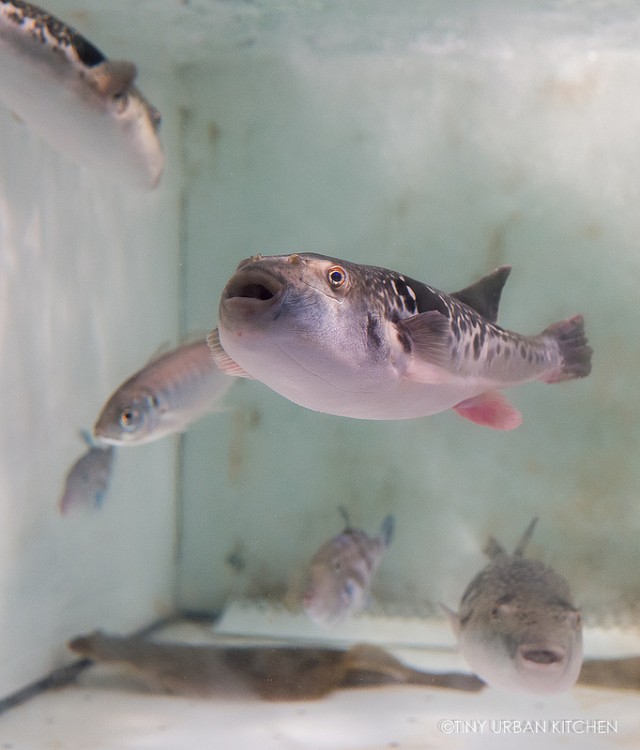
We saw many other sorts of unusual restaurants, such as this place that specialized in fugu, or puffer fish sashimi. They had a tank full of live puffer fish displayed on the window, as well as plastic versions of the various sashimi packages they offered.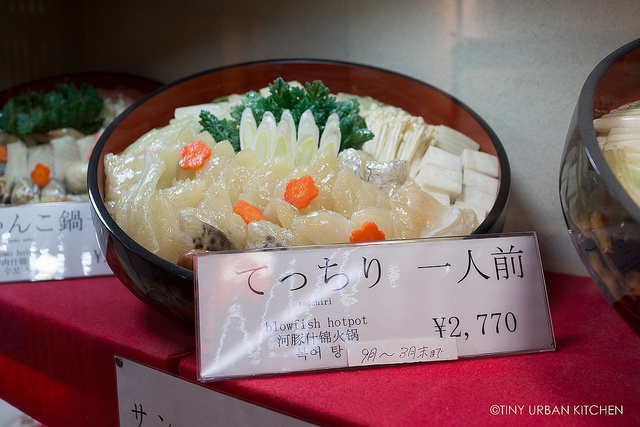
It is supposedly very safe these days to eat puffer fish in Japan. However, there's a part of me that's still a bit nervous about it, and thus I haven't tried it yet (though Bryan has!).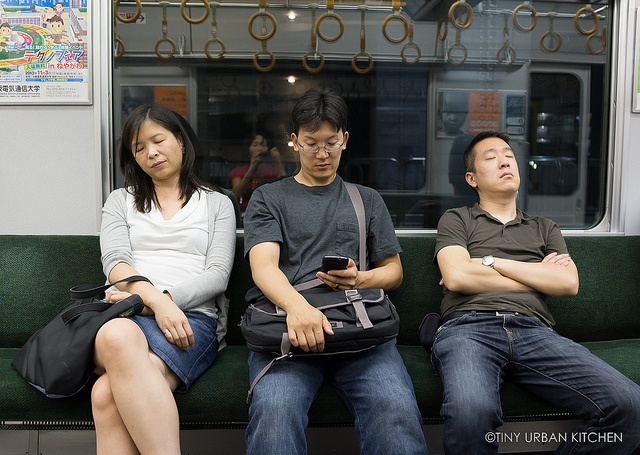
After a long evening wandering around Dotonbori, we caught one of the last trains back to Osaka. At that point, the bullet trains weren't running anymore, so we just hopped on a local train, which still only takes 30 minutes or so.
I'm sure there's still so much of Dotonbori that we missed, but we'll have to save that for another time. I think the next time I go to Japan, I should seriously set aside a few days to devote specifically to Osaka!
All Rights Reserved

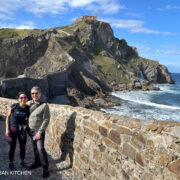
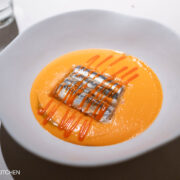
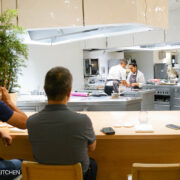
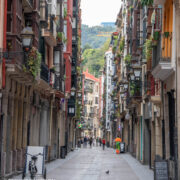
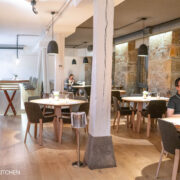
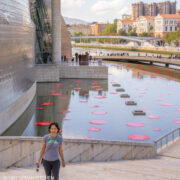
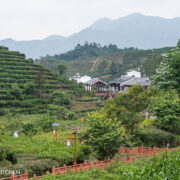
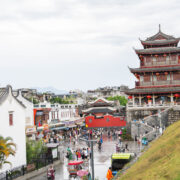
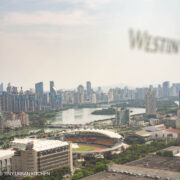
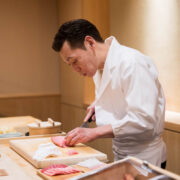
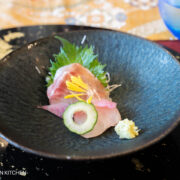
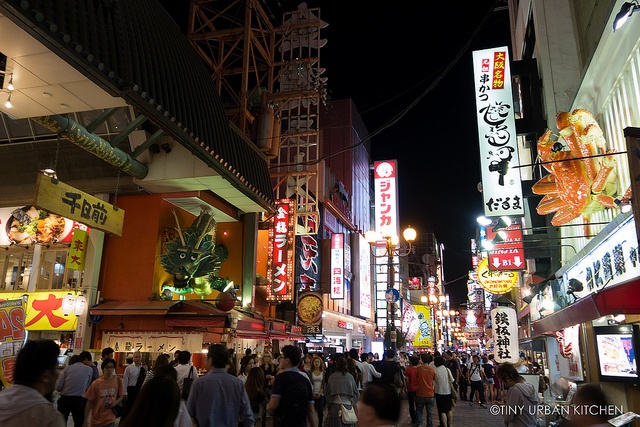
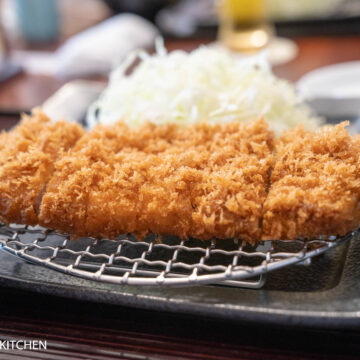
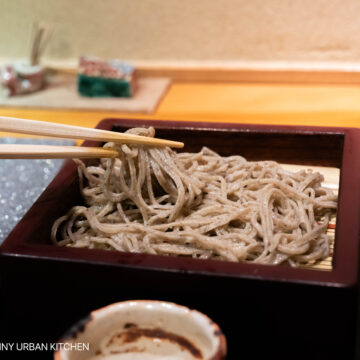
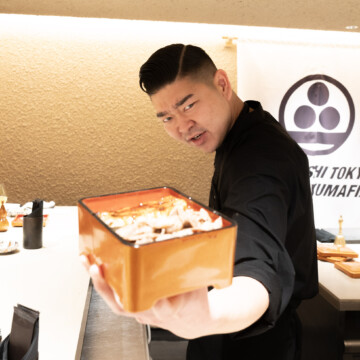
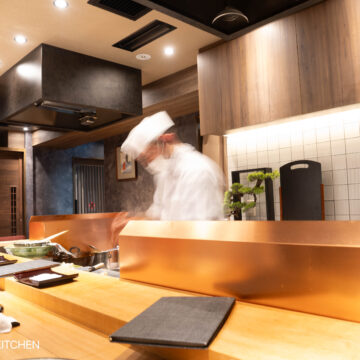
[…] and very authentic item that they offer is the Okonomiyaki, a dish that, up until this point, I had only enjoyed in Japan. This was very good. The flavors were very authentic and totally reminded me of Japan. Even […]